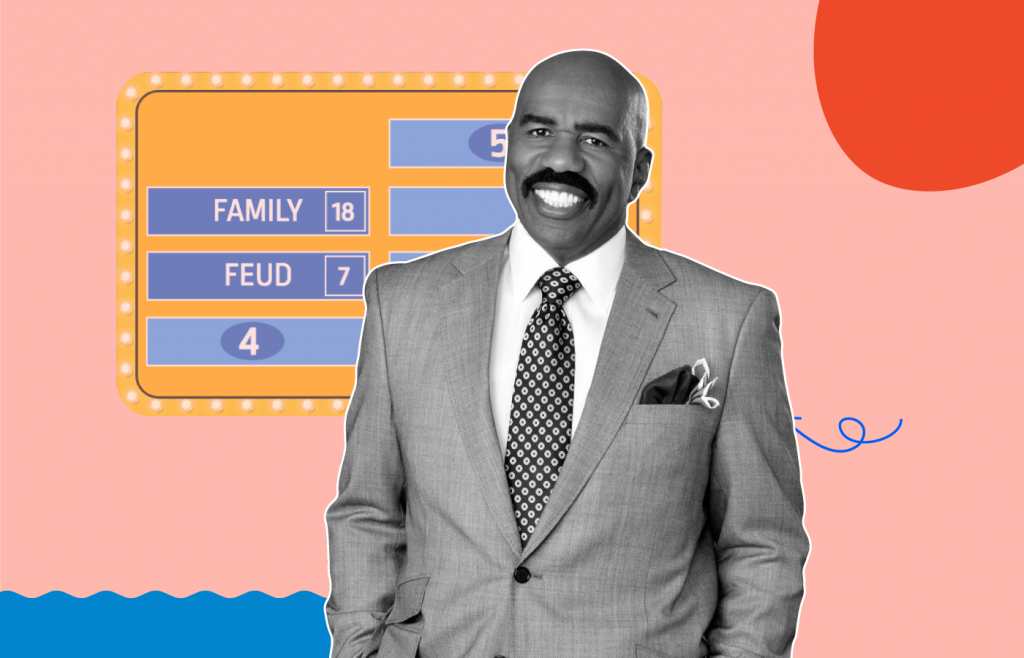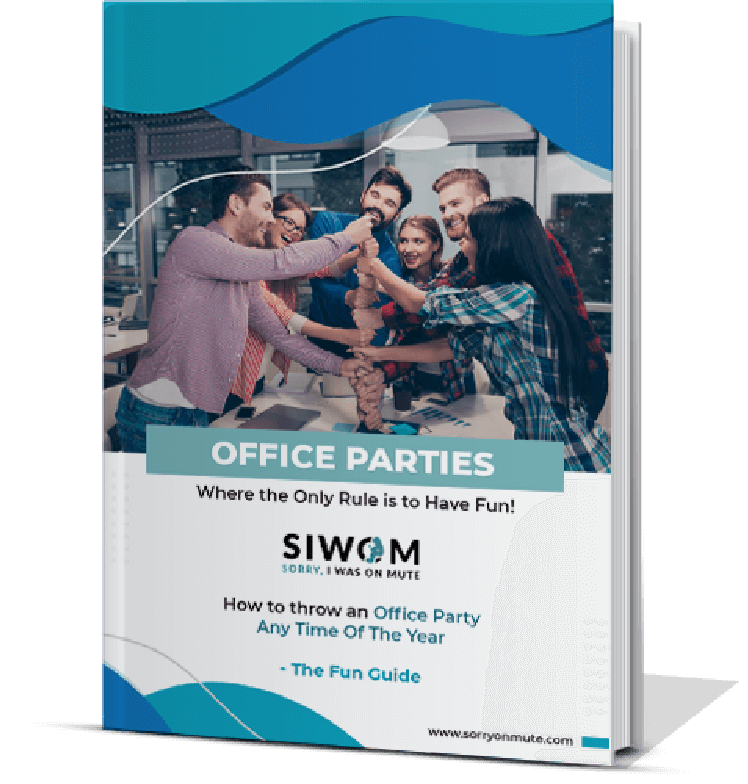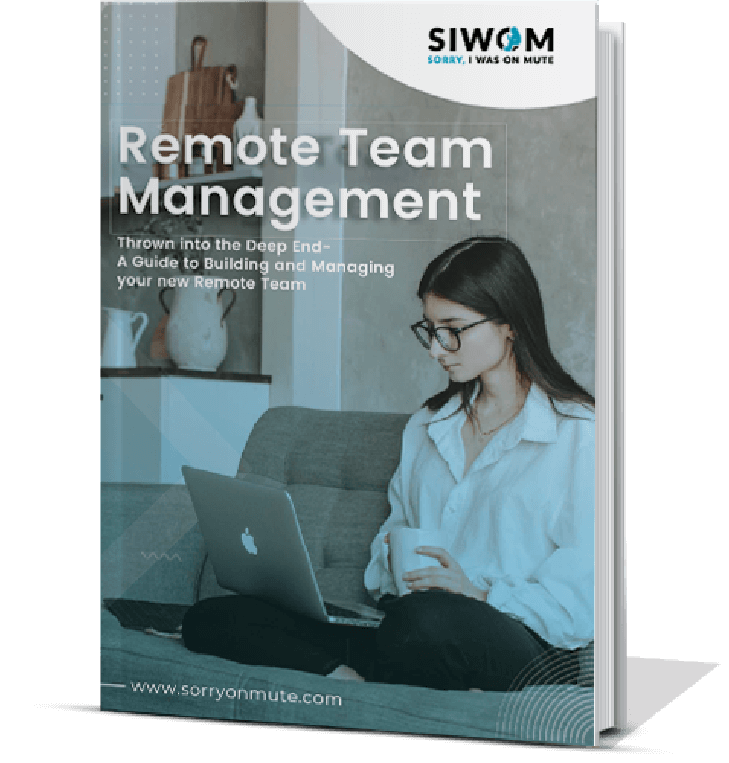1. What Is the Family Feud Game?

Family Feud was originally a TV game show that first aired back in 1976 in America. The format has since been adapted into video games and board games, as well as being taken up in other countries around the world, from Afghanistan to Uruguay.
Gameplay is fairly simple: two families (or, more generally, teams) face off against one another to answer a series of questions that have previously been put to members of the public. The goal for each team is to try and find the most common answers, as the more popular the answer is, the more points that are received. The winning group is the one that has the most points at the end.
2. Top 18 Family Feud Questions for Work

2.1. Questions Related to Office Supplies
1. Name a common item that employees often steal from the office.
a) Post-it notes
b) Notepads
c) Highlighters
d) Toilet paper
2. What's the most common office supply that always seems to go missing?
a) Writing implements
b) Notepads
c) Printer paper
d) Stapler
2.2. Questions Related to Workplace Etiquette
3. Name a common reason why employees arrive late to work.
a) Traffic
b) Overslept
c) Bad weather
d) Too tired to get up
4. What's the most common excuse employees give for not completing their work on time?
a) Technical difficulties
b) Unexpected emergencies
c) Illness
d) Miscommunication
2.3. Questions Related to Office Snacks
5. Name a classic vending machine snack.
a) Pretzels
b) Candy bars
c) Popcorn
d) Trail mix
6. Name a snack that's often shared during office celebrations.
a) Cheese and crackers
b) Popcorn
c) Mixed nuts
d) Veggie platter with dip
2.4. Questions Related To Annoying Coworker Habits
7. What's the most annoying office behavior that colleagues engage in?
a) Interrupting
b) Taking credit for someone else’s work
c) Oversharing
d) Not doing their work
8. What's the most frequent source of office gossip?
a) Coworkers
b) Boss
c) Clients
d) Interns
2.5. Work-From-Home Challenges
9. Name a common distraction during work-from-home.
a) Television
b) Social media
c) Household chores
d) Pets
10. What's the challenge of virtual meetings from home?
a) Technical issues
b) Background noise
c) Interruptions
d) Poor internet connection
2.6. Common Meeting Excuses
11. Name a reason for not attending a meeting.
a) Conflicting appointments
b) Family emergency
c) Feeling unwell
d) Unforeseen work tasks
12. What's the most embarrassing thing that can happen to an employee during a presentation?
a) Technical difficulties
b) Losing your train of thought
c) Wardrobe malfunction
d) Joke falls flat
2.7. Office Pet Peeves
13. Name a popular office prank that colleagues play on each other.
a) Cover the sensor on a mouse
b) Buy a box of doughnuts and replace them with healthy snacks
c) Plug a wireless mouse into a colleague’s computer and sporadically move it
d) Unroll toilet paper, draw a spider on it and roll it back up
14. Name a common pet peeve when it comes to office communication.
a) Business speak
b) Group emails
c) Overexplaining
d) Lack of clarity
2.8. Questions Related to Office Jargon
15. Name a common office jargon for a team collaboration meeting.
a) Brainstorming session
b) Synergy meeting
c) Ideation workshop
d) Strategy huddle
16. What's a buzzword often used in business emails to request urgent attention?
a) ASAP (As Soon As Possible)
b) STAT (Immediately)
c) Urgent action required
d) Time-sensitive matter
2.9. Work-Related Apps
17. Name a project management app commonly used in the workplace.
a) Asana
b) Trello
c) Jira
d) Monday.com
18. What's a popular communication app for team collaboration?
a) Slack
b) Microsoft Teams
c) Zoom
d) Google Meet
3. How to Play Family Feud at Work
3.1. Divide the Group into Two Teams
While the title of the game is Family Feud, you obviously don’t need to be a family to play. The important thing is to have evenly sized teams with a mixture of personalities and roles, in order to maximize the socialization factor. On the TV show, there are always 5 contestants per group, and this is generally a good number to stick to because it gives everyone a chance to play without dragging out the game. Depending on the number of colleagues that are taking part, you can make up as many teams as you like.
3.2. Choose a Host or Facilitator

One person gets to play the essential role of host. There’s usually at least one person in every office who relishes the role of compere, just make sure that whoever takes on the job is confident and charismatic, as this will make the game a lot more enjoyable for everyone concerned.
3.3. Survey your Coworkers
In order to figure out the top answers to your Family Feud questions, you’ll need to survey your staff. On the TV show, there are always 100 people polled to determine the points, but don’t worry if you have a fewer or greater number of people in the office – the important thing is just that all respondents answer the entire survey so that there are approximately the same amount of points for every question.
3.4. Set Up a Buzzer System
There are several buzzer apps you can use to create a buzzer system for contestants to buzz in, or you can rely on a less technologically sophisticated setup, such as the first person to raise their hand. It really doesn’t matter, just so long as you can clearly see who is first to chime in.
3.5. Have Fun & Enjoy
Now that you have everything prepared, it’s time to play! Remember that the main point of this is to encourage team camaraderie, so make sure you create the right kind of atmosphere, one that is predominantly about having fun, with just a dash of competitive energy.
3.6. Ask for Feedback
After you’ve finished playing Family Feud, ask your staff for feedback on the experience? What aspects did they think worked well and what needed improvement? Their critiques will allow you to make your office games night even better the next time around.
4. General Guidelines for Family Feud Questions
- Traditionally, Family Feud questions are open-ended, for example, “What might you pack for a beach holiday?” They can also be statements, such as “Name a common household pet.”
- When you’re playing with work colleagues, you may want to supply some multiple-choice options as office family feud questions in order to give everyone a fighting chance to get some points.
- Have a predefined set of answers to make it easier to manage the scoring system.
- Points are only given for the top 8 answers, though you can fiddle with this format so that there are either more or fewer responses.
5. FAQs
5.1. What are some good Family Feud questions?
In this post, we’ve limited ourselves to office Family Feud questions and answers for work party scenarios, but there’s no reason a game with coworkers needs to be all business. For example, consider mixing in questions about favorite foods, sports, or holiday destinations.
5.2. How is Family Feud played?
In an office setting, Family Feud is usually played by dividing participants into two or more teams, who then compete to accrue the most points possible. The winning group can play purely for bragging rights, or you can offer some small prizes for added incentives. Fun virtual teambuilding platforms like Hooray Teams can also help you set up an event like Family Feud for your team.
5.3. How to make a Family Feud game?
The most important constituent of a fun Family Feud game is the questions. Once you’ve got those prepared, the rest of the setup is fairly simple, as playing requires very little in the way of additional resources.
5.4. What are some Family Feud fast money questions?
Family Feud Fast Money questions involve surveying a group of people and asking them to provide the first thing that comes to mind regarding a particular topic. Here are some examples of Fast Money questions:
- Name a popular fruit.
- Tell me a reason someone might be late for work.
- Name something people do to relax.
- Name a holiday where people give each other gifts.
- Name a type of pet.
5.5. What are some Christmas family feud questions and answers?
Some Christmas-themed Family Feud questions and sample answers:
Name a popular Christmas carols
Answers: "Jingle Bells," "Silent Night," "Deck the Halls," "Joy to the World."
What's a common Christmas decoration?
Answers: "Christmas tree," "Wreath," "Lights," "Ornaments."
Name a traditional Christmas food.
Answers: "Turkey," "Ham," "Eggnog," "Cookies."
What's a popular Christmas gift for kids?
Answers: "Toys," "Video games," "Dolls," "Bicycles."
Name a Christmas movie everyone watches.
Answers: "It's a Wonderful Life," "Home Alone," "Elf," "A Christmas Carol."
 Interested in Virtual Team Building Events?
Interested in Virtual Team Building Events?





















